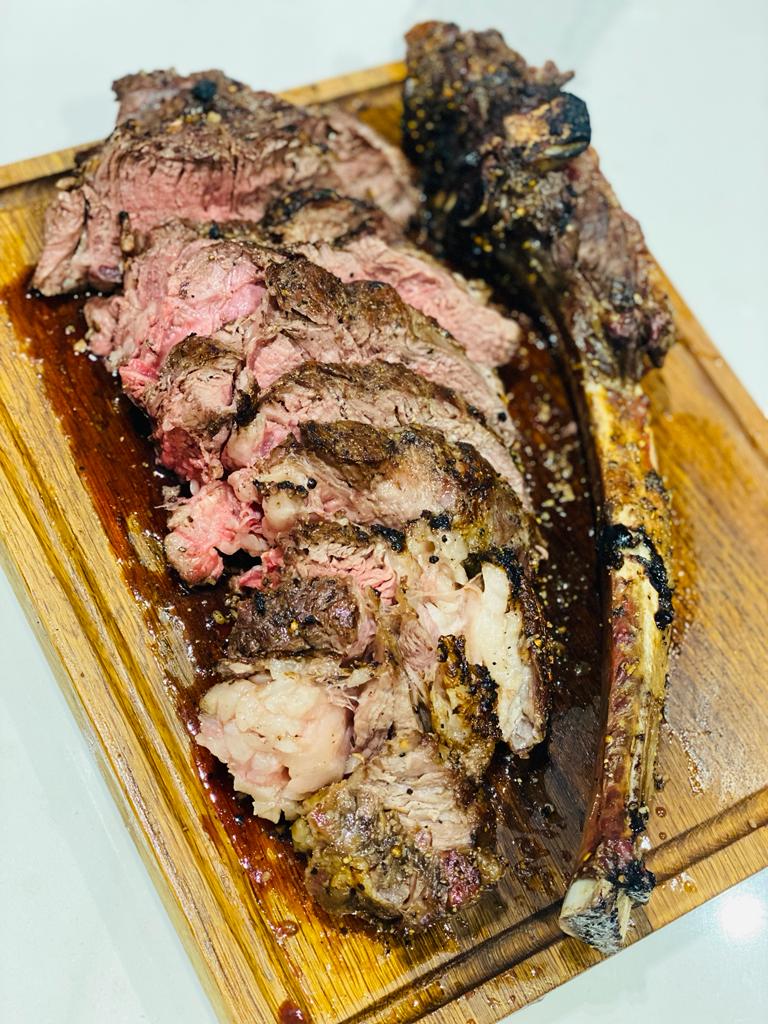How to Reverse Sear Tomahawk and Benefits

The process of reverse-searing is really simple: Season a roast or a thick-cut steak (the method works best with steaks at least one and a half to two inches thick), arrange the meat on a wire rack set in a rimmed baking sheet, and place it in a low oven—between 200 and 275°F (93 and 135°C). You can also do this outdoors by placing the meat directly on the cooler side of a closed grill with half the burners on. Cook it until it's about 10 to 15°F below your desired serving temperature (see the chart at the end of this section), then take it out and sear it in a ripping-hot skillet, or on a grill that's as hot as you can get it.
What’s interesting about a reverse sear is how it takes traditional steak cooking and flips it upside down.
Most steaks are cooked on one appliance, the grill or a cast-iron skillet. However, the reverse sear involves cooking the meat to perfection on a very low heat in the oven. From there the steak is seared in a cast-iron skillet to create the dark, crisp crust that signifies a well-cooked steak.
Although a reverse sear is a more involved way of cooking your steak, it’s a cooking method that is known as one of the best ways to prepare a steak right, every time. Here are a few of the reasons why the reverse sear is so highly revered amongst foodies and chefs alike.
1. Perfect crust
When a steak is left to cook in the oven, the heat dehydrates the surface of the steak. Not only does this create the coveted Maillard Reaction that makes the inside of a steak juicy and delicious, but it also primes the beef for the upcoming sear that gives it the perfect exterior look.
When the surface of the steak is devoid of juices, the pan sear will be more effective and combine with your seasonings to create a crunchy, enticing crust. Combine this with the steak’s insides cooked to perfection, and you have an award-winning steak that can’t be beaten!
2. More control over doneness
Slow and controlled cooking allows a chef to ensure that a steak is prepared completely to a guest’s satisfaction. The reverse sear prevents accidental overcooking and creates an even amount of doneness throughout a steak.
